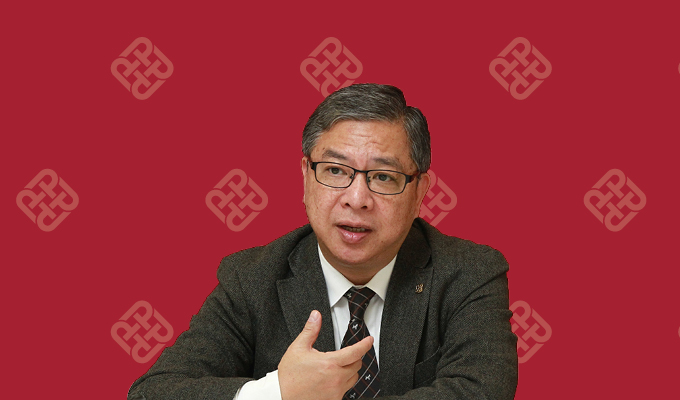Urban people are under different levels of stress caused by studies and work. In this issue, Prof. Hector Tsang of the Department of Rehabilitation Sciences shared his 20-year effort in applying traditional Chinese health exercises in occupational therapy, thereby helping people to relieve stress and maintain body-mind wellness.
1. Please briefly share your research interest.
I have been doing research in neuropsychiatric rehabilitation for more than 20 years. I worked as a psychiatric occupational therapist in a hospital prior to embarking on a career in research. As I saw the difficulties of people recovering from mental illness to re-enter the workforce in society, my PhD paper was also related to neuropsychiatric rehabilitation. After joining the Department of Rehabilitation Sciences of PolyU, I naturally continued my research in this area.
In 2003, I collaborated with the University of Chicago and the Chinese Academy of Sciences and jointly received a US$2.5 million grant from the National Institutes of Health of the United States for a study to investigate the reluctance of employers in recruiting ex-mentally ill persons. After that, I received support from the Health and Medical Research Fund in Hong Kong to design an Integrated Support Programme to assist ex-mentally ill patients to re-enter the workforce. The Programme focused on improving their social skills, helping them establish relationships and adapt to work. Results showed that their employment rate increased from 40-50% to close to 80% after improvement in their social skills.
2. What inspired you to apply traditional Chinese health exercise in rehabilitation to relieve stress and maintain body-mind wellness? Could you please share a rehabilitation treatment example?
I joined PolyU back in 1997. At that time, the founding professor of the Department of Rehabilitation Sciences had a keen interest in Tai Chi research, and founded the Centre for East-meets-West in Rehabilitation Sciences. Having practised Chinese martial arts, Wing Chun (詠春) and Hung Kuen (洪拳) in my teenage years, I decided to integrate this interest in the research of clinical occupational therapy to promote body-mind wellness.
Occupational therapy is a kind of allied health service in Western medicine. Traditional occupational therapy treatments consist of physical, sensory, mental and communication activities. I take this to another level, using Chinese health exercises as a treatment intervention to develop or recover certain abilities of patients. This is an East meets West approach in rehabilitation.
I once had a client who was a primary school principal. When I first provided occupational therapy service to her, she just took up the role of principal. Many teachers were doubtful of her job competence and management method. As a result, she felt very stressful and suffered from insomnia, palpitation and muscle tension, which seriously affected her work and life. I taught her a series of relaxation techniques, including Eight Section Brocades (八段錦), which she practised regularly. After two to three months of treatment, there was significant improvement in her emotions and sleep quality.
3. How do you take occupational therapy from hospital setting to the community?
Traditional occupational therapy takes place in hospitals. However, in the recent 10 years, occupational therapy has been extended from treating the disabled to sickness prevention. Since 2009, with the support from the Quality Education Fund, my research team has introduced occupational therapy to primary and secondary schools where we organised stress management workshops for teachers. Also, in view that South Asian students encountered difficulties in learning Cantonese which causes Second Language anxiety, we helped them to improve communication and social skills through occupational therapy, thereby lowering their anxiety level. Since 2009, more than 5,000 teachers and 100,000 students from over 100 schools have benefitted from our workshops.
4. In your 20-year career in research, what has driven you to continue your effort in neuropsychiatric rehabilitation?
When the newspaper first published my research on the anti-depressive effects of Eight Section Brocades among adults in 2003, I received more than 70 telephone calls from the public on the same day requesting for details and treatment. I was surprised and moved by the impact of the study to the public. After that, I also received invitations from various media for interviews and demonstrations. This had confirmed that my research direction along this line is meaningful, and has since motivated me to continue with this research series.
5. Can you share your daily health exercises?
Mindfulness exercise can train both the body and the mind, enabling the practitioner to achieve body-mind peacefulness. In the past 15 years, I insisted on practising day and night a self-invented 20-minute routine that combines yoga, Eight Section Brocades and Taichi to regulate my breath and create peace of mind. Over the years, this mindfulness exercise has trained my body, relieved my stress and helped me to handle my busy schedule in teaching, research and administrative work.
